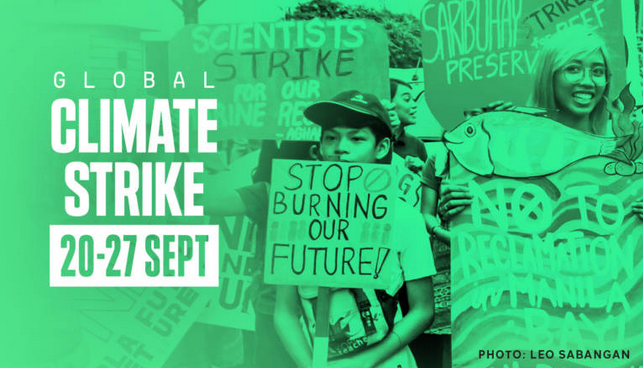
The “Green New Deal” (GND) proposals essentially begin with a relatively conservative proposal by the British Green New Deal Group (GNDG), who launched their “Executive Summary“ in 2008. They have produced more current reports and recommendations since then, including language for a Decarbonisation and Economic Strategy Bill in 2019. Since these reports all focus on British strategy, and on the British political and financial environments, we’ll look only to the first report for now, as a static foundation upon which later GND solutions emerged and developed for the American environment; but the reader should remain aware that the group continues to be responsive to today’s political and global environment for moving Great Britain into a green 21st century. Their current website is here.
The initial report (followed later by more policy-centered writing) actually focused as much or more on the upcoming climate problem (as seen from 2008) as it did on solutions to that problem. The report also borrowed a great deal from history, in particular from two specific moments. First, the report borrowed from FDR’s New Deal, when the US government saw the urgency of the situation as an opportunity to make massive change across the board, rather than tinkering at the edges of a problem with incremental modifications. Second, the report noted WWII, when the British Government, and the British public, came together to meet and defeat the German threat. The sacrifices of not just the men at the fighting lines (and those civilians killed in bombing raids or on ships sunk by German naval and air forces), but by the families back home of their time, work, and property in ensuring that their nation was able to meet the challenge of an existential threat, are taken as a cue that when faced with dire circumstances, we (the British, in this case) can indeed come together, pool resources, and put the interests of nation and community ahead of self interests. Such moments also show that the individual can see self interests as intersecting with national and community interests.
However, the initial GNDG report, while based on establishing the urgency of the problem, and while illustrating the precedent of massive problems being overcome by the public uniting with the government, also established some initial policy suggestions. The initial report proposed a climate goal of keeping warming to below 2° C (climate warming increases are relative to mid-19th century average temperature levels; that is, to before the bulk of industrial exhaust was put by corporate industrialization into our atmosphere and water). The GNDG initially proposed a roughly 40-year project to lower British carbon emissions by 80% of the 1990 levels (by 2050), thereby remaining as a net carbon emitter. As we’ll see when we explore more recent proposals, considering the failure of governments to take climate change seriously and substantially reduce emissions, and the resulting acceleration of the problem, today’s GND proposals call ultimately for achieving complete carbon neutrality.
This point is stressed by the lack of action taken thus far. As Mark Lymas warned in multiple points in his book, Six Degrees (2008), we are nearing a point when warming is sure to exceed 2°. If we do exceed that target, then there is the problem of feedbacks, where naturally stored carbon (e.g., CO2 and methane in the soil, in our oceans and under the sea floor, in bogs and marshes and other wetlands, and in forests) is released by that warming; and then the earth itself becomes, thanks to us, the major carbon emitter, rather than industrial processes. We now have to move to more restrictive policies than would have been necessary had climate security been effectively implemented a decade or two ago, to keep that from happening. If the feedbacks accelerate, then climate warming might not be controlled until it reaches apocalyptic proportions – and then, likely, not at all.
However, from the less dangerous (and more hopeful) view of 2008, even the relatively conservative initial proposal of the GNDG saw that large-scale carbon reduction (to 80% of 1990s levels) would require not just some economic and industrial tinkering, but massive structural change. The initial GNDG report focused on the banking and financial sector as in particular needing reform for a GND to work. The authors called for structural transformation of the regulation of national and international financial systems, and major changes to the tax structure. They proposed a sustained program of energy conservation and renewable energy strategies, coupled with effective demand management. They urged banking reform and demergers, to keep banks from being “too big to fail.” They also sought specific targeting of offshore and internet banking and finances for compliance; credit re-regulation, to minimize dangerous credit risks; a program of global debt cancellation; and low interest rates.
The initial report saw the need for a revamping of the jobs sector, to prevent fossil-fuel retirement from causing unemployment, and to shift jobs to a growing green jobs sector; but the initial report was vague on details (reserving that for later reports). The authors did, however, call for the creation of a “Green Army” of workers to join the green sector. The use of the “army” epithet is appropriate considering the authors’ call for wartime-level consumption changes. The authors optimistically hoped that the British public will take upon themselves the need to sacrifice for the greater good. This is one of the weaknesses of the initial proposal. The British wartime experience did not involve a public questioning the existence of the Germans, or questioning the threat of the bombs falling upon them; and did not envision an entire media dedicated to convincing deniers of the realities becoming ever more apparent around them that those events were not taking place. Our 21st century political environment, however, is very different from that of World War Two.
Costs of the project were anticipated at being at least £50 billion per year; today’s estimates make that figure pale in comparison. Nonetheless, ensuring such a figure for as long as 40 years required serious thought as to funding; and so the authors proposed a large-scale program involving carbon taxes, GND bonds, enforcement fees, green development “savings plans” (albeit, with tax offsets), and other private-sector “Green Banking” drives. The authors also argued that peak oil would lead to rapidly increasing gas prices, which would “fuel” the revamp to cheaper renewables. This last argument has not for the most part manifested. Peak oil has not yet arrived, and so the geometric increase in petroleum prices predicted by the authors also remains hypothetical. However, the learning curve on solar and wind technology has lowered renewable prices significantly, and that may in the end produce a similar effect to that looked for by the GNDG.
The authors also proposed the actual physical infrastructural changes needed to conserve energy and transition to green energy. They called for “Every Building a Power Station,” focused on vastly increasing local production of energy by each home and building. They looked to smart city development and vastly improved consumption efficiency. They foresaw massive expenditures, from actual power systems (wind turbines and solar), to wires and pipes and green-friendly products to replace those less so.
The financial basis of the authors’ thinking can be found in their proposals for cost-realistic fossil prices (including carbon costs and taxes, etc.) to move the public away from fossil fuels and toward renewables. They also insisted that all public pensions must be disconnected from funds, stocks, and bonds that are not carbon friendly; and that financial laws should directly incentivize carbon-friendly funds. Similarly, their thoughts on corporate and environmental policy involved proposals for corporate tax enforcement, including of offshore tax havens, and for a separate tax structure for small businesses to enhance local job creation for the Green Army.
Understanding that both changes to the system, as well as any climate change effects experienced would disproportionately hurt the poor and minorities the most, they argued for funding and investment initiatives toward reducing the cost of transformation to those most vulnerable. Details in this initial report on protecting vulnerable communities were not forthcoming, however. But we do see in this proposal the embryo of the focus on protecting vulnerable communities that is found in the later proposals we’ll explore.
Finally, the authors proposed an international component, which features prominently in every other GND proposal since then. Their international policies include support for developing economies through massive infrastructural development funds for GND transformation in other nations; intellectual property restrictions eased for poor nations to use transition technology developed in rich counties; and the enforcement of international climate security agreements such as Kyoto and Paris (as well as additional agreements as needed).
This is the initial proposal from 2008, which helped to define policy areas, and start the conversation about achievable goals, and tactics and strategies for meeting those goals, for later GND proposals (including these authors’ later, updated recommendations). In our next post, we’ll take a look at the Green Party’s proposal (last updated apparently in 2016) for a Green New Deal.
Image from the Executive Summary title page, published by the Green New Deal Group, 2008.
